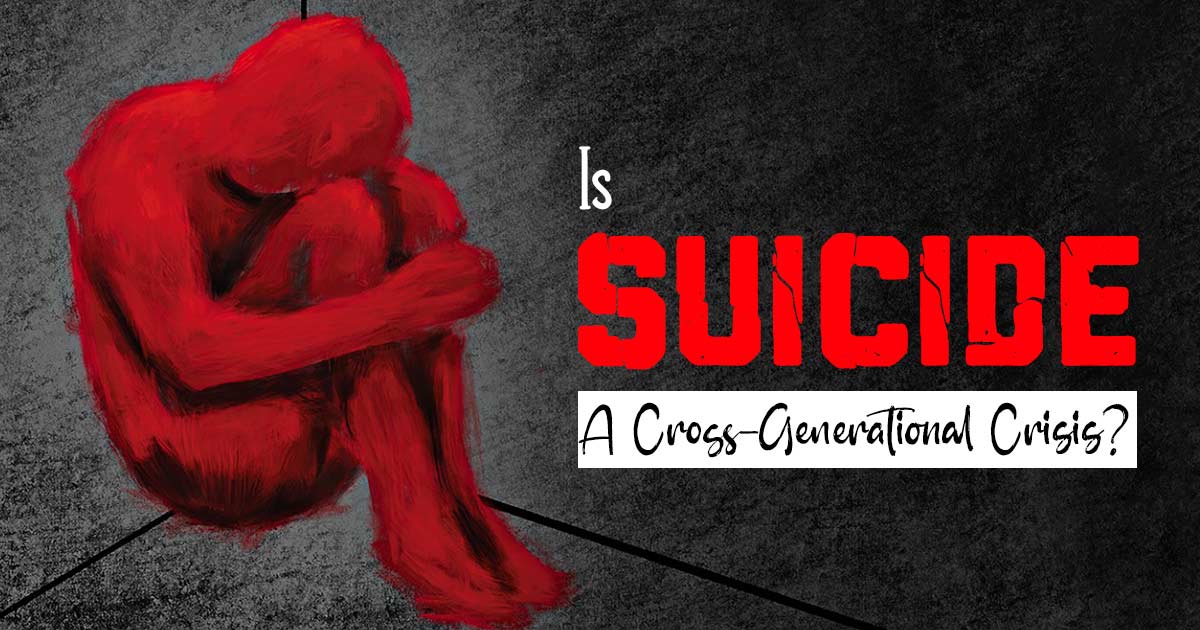Suicide is a pressing global public health issue that affects individuals across all demographics. Recent years have seen a concerning increase in suicide rates among various groups, underscoring the need for a thorough understanding of these trends and the factors contributing to them.
This essay explores the rising suicide rates among children, teenagers (with a focus on gay teens), academia members, corporate employees, the elderly, military veterans, and individuals considering euthanasia.
Rising Suicide Rates In Children
Suicide rates among children have witnessed an alarming rise in recent years. According to data from the Centers for Disease Control and Prevention (CDC), suicide is now one of the leading causes of death among children aged 10-14. In 2019, suicide claimed the lives of 549 children in this age group in the United States alone.
Factors contributing to the increase in child suicides include cyberbullying, academic pressure, and increased access to information about self-harm and suicide on the internet. Additionally, the COVID-19 pandemic has exacerbated mental health challenges for children, further contributing to this distressing trend.
Preventive measures for child suicides should focus on comprehensive mental health programs in schools, parental education about recognizing signs of mental distress, and stricter anti-bullying policies on social media platforms and websites.
Rising Suicide Rates In Adolescents
Teenagers, particularly those identifying as LGBTQ+, face unique challenges that have contributed to rising suicide rates. According to the Trevor Project, a national LGBTQ+ youth crisis intervention and suicide prevention organization, LGBTQ+ youth seriously contemplate suicide at nearly three times the rate of heterosexual youth.
Discrimination, stigma, and bullying are key factors impacting gay teens. In a survey conducted by the Trevor Project in 2020, 40% of LGBTQ+ youth reported seriously considering suicide in the past year. The study also found that LGBTQ+ youth who experienced discrimination based on their sexual orientation were more than twice as likely to attempt suicide compared to those who did not.
Efforts to prevent suicide among gay teens should include creating safe and inclusive environments in schools and communities, establishing support groups and mental health services tailored to their specific needs, and implementing comprehensive anti-bullying campaigns to promote acceptance.
Rising Suicide Rates In Members Of The Academia
The academic community has also seen a concerning rise in suicide rates. According to a study published in JAMA Pediatrics, the suicide rate among U.S. college students increased by 47% from 2007 to 2017. Similarly, faculty members in academia are not immune to this trend.
While specific statistics for faculty suicides can be challenging to obtain due to underreporting, the academic pressure and mental health challenges faced by both students and faculty are well-documented.
Academic pressure, the “publish or perish” culture, and a limited work-life balance are contributing factors to the rising suicide rates in academia members. The competitive nature of academia can lead to high levels of stress, anxiety, and depression.
To address the increasing suicide rates among academia members, institutions should provide accessible mental health services for both students and faculty, encourage mentorship programs and peer support networks, and work to change the institutional culture to prioritize mental health and well-being.
Rising Suicide Rates In Corporate Employees
Suicides among corporate employees have been on the rise, driven by a multitude of factors. According to the World Health Organization (WHO), the workplace can be a significant contributor to mental health issues, including suicide.
High job demands, job insecurity, and stigma around mental health are key factors affecting corporate employees. The relentless pursuit of productivity and the fear of job loss can lead to chronic stress and burnout. In some corporate cultures, discussing mental health problems is discouraged, creating a barrier to seeking help.
Statistics vary by region and industry, but the reality about the rising suicide rates in the corporate world is obvious. For example, in Japan, where overwork is a well-documented issue, suicides related to work, known as “karoshi,” have been reported for decades.
Corporate organizations can take steps to address this trend by offering confidential counseling and mental health support services for employees, educating both employees and management about recognizing signs of mental distress, and promoting work-life balance through flexible schedules and paid time off.
Rising Suicide Rates In The Elderly
The elderly population is particularly vulnerable to suicide due to various factors. According to the World Health Organization (WHO), adults aged 70 and older have the highest suicide rate globally. In many countries, suicide rates among the elderly are higher than in any other age group.
Social isolation, health issues, and limited access to mental health services are significant contributors to the rising suicide rates among the elderly. Loneliness, especially after the loss of loved ones or when residing in care facilities, can lead to feelings of hopelessness.
Statistics show that suicide rates among the elderly vary by country, with some regions experiencing higher rates than others. For example, in the United States, the suicide rate for adults aged 85 and older is nearly 50% higher than the national average.
Efforts to prevent suicide among the elderly should focus on community outreach programs that combat loneliness, improved access to affordable mental health services, and routine mental health screening in healthcare settings.
Rising Suicide Rates In Military Veterans
Military veterans face unique challenges that put them at an increased risk of suicide. According to the U.S. Department of Veterans Affairs (VA), an average of 17 veterans die by suicide every day in the United States.
Post-Traumatic Stress Disorder (PTSD) resulting from combat experiences, the difficult transition from military to civilian life, and limited access to mental health services are key factors contributing to the rising suicide rates among veterans.
Statistics indicate that the suicide rate among veterans is higher than that of the general population. However, these rates can vary among different branches of the military and over time.
Efforts to prevent suicide among military veterans should include improved access to specialized mental health services, reducing stigma surrounding mental health within the military community, and establishing support networks and peer programs that connect veterans with others who have faced similar challenges.
Suicide In People Considering Euthanasia
Euthanasia, the act of intentionally ending one’s life to alleviate suffering, is a complex and controversial topic. It is legal in some countries and states, while others prohibit it entirely. Statistics related to euthanasia can vary greatly based on the legal and cultural context.
In countries where euthanasia is legal, such as the Netherlands and Belgium, statistics show that a small but significant number of individuals choose euthanasia as an end-of-life option. However, it’s important to note that these cases are typically well-regulated and require stringent criteria to be met.
In places where euthanasia is illegal or restricted, data on illegal euthanasia or self-administered methods are difficult to obtain due to the clandestine nature of such actions. The discussion surrounding euthanasia involves complex ethical, legal, and medical considerations. In some cases, individuals may consider euthanasia as a response to severe physical or emotional suffering that they deem unbearable.
The rising suicide rates across various demographic groups are a grave concern that requires collective attention, understanding, and action. While statistics highlight the severity of these issues, it is crucial to recognize that behind each statistic is a person grappling with pain, despair, and hopelessness.
Preventing suicide demands comprehensive strategies that address the unique challenges faced by each demographic group, prioritize mental health, reduce stigma, and promote a society where individuals can find support and hope even in the most challenging circumstances.



